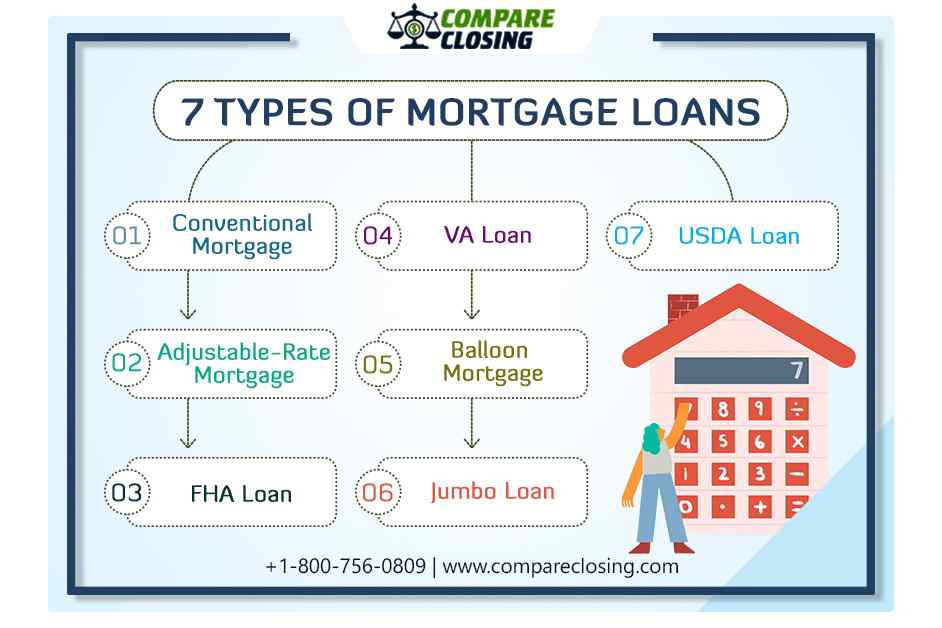Conventional Mortgage Loans: Your Overview to Traditional Home Funding
Conventional Mortgage Loans: Your Overview to Traditional Home Funding
Blog Article
The Vital Elements to Consider When Finding Between Fixed-Rate and Adjustable-Rate Home Loan Financings
When reviewing mortgage alternatives, debtors deal with a critical decision between fixed-rate and adjustable-rate finances, each providing possible pitfalls and unique advantages. Trick factors to consider such as interest price stability, predictability in regular monthly repayments, and the ramifications of potential price adjustments can dramatically influence lasting economic wellness.
Passion Price Stability
When selecting a home loan, understanding passion price security is critical for informed decision-making. Interest prices can dramatically influence the general cost of a mortgage, and recognizing the nature of these prices is necessary for customers.
On the other hand, adjustable-rate home mortgages (ARMs) begin with reduced preliminary rates that may alter regularly based on market conditions. While this can cause reduced settlements at first, it likewise introduces unpredictability, as customers might encounter raised settlements if rates of interest rise. For those considering an ARM, it is important to assess the probability of rate modifications, the possibility for settlement increases, and the length of the first fixed-rate period.
Eventually, the choice in between adjustable-rate and fixed-rate home loans depends upon private threat tolerance and economic scenarios. Comprehending rate of interest security helps debtors make notified choices that straighten with their long-term monetary goals.
Month-to-month Settlement Predictability
While debtors commonly focus on rates of interest stability, the predictability of regular monthly payments is similarly vital in the home mortgage selection procedure (Conventional mortgage loans). Regular monthly payment predictability plays a critical role in budgeting and monetary preparation, as it directly impacts a home owner's capital and general financial health and wellness
Fixed-rate mortgages provide a regular month-to-month payment throughout the life of the loan, enabling consumers to anticipate and intend their costs efficiently. This stability can be particularly helpful for new buyers or those on a fixed revenue, as it eliminates the uncertainty related to varying settlements.
On the other hand, variable-rate mortgages (ARMs) commonly include lower first repayments that can alter with time, leading to prospective variability in regular monthly obligations. While originally enticing, this unpredictability can make complex financial planning, particularly if customers do not make up future price changes.
Potential Price Adjustments
In the realm of adjustable-rate mortgages (ARMs), potential price changes represent a substantial element that borrowers need to meticulously think about. Unlike fixed-rate home loans, where the rate of interest continues to be the same for the life of the loan, ARMs are defined by rising and fall interest prices that are tied to market indices. This irregularity can lead to significant modifications in month-to-month settlements, influencing the borrower's financial preparation and budgeting.
Consumers should be aware of the margin and index made use of to calculate these adjustments, as they straight influence future rate of interest prices. Furthermore, ARMs typically include caps that limit exactly how a lot the rate of interest price can increase at each change and over the life of the lending, which can give some level of protection versus drastic rate hikes.
Recognizing these possible modifications is vital for borrowers, as they directly affect long-lasting payment responsibilities. As a result, examining individual monetary circumstances and run the risk of resistance is important when making a decision whether an ARM aligns with one's financial goals.
Car Loan Term Factors To Consider
Loan term considerations play an essential function in the decision-making process for borrowers choosing between adjustable-rate and fixed-rate home mortgages. The size of the funding term dramatically affects monthly payments, rates of interest, and overall monetary preparation. Fixed-rate home mortgages normally use terms of 15 to three decades, offering security in regular monthly settlements and predictability in budgeting. This can be specifically appealing for customers that prepare to remain in the same home long-term and choose the certainty of set repayments throughout the life of the financing.

Inevitably, debtors should examine their individual circumstances, financial goals, helpful hints and market problems when evaluating the implications of financing term options within each home mortgage type.

Overall Price of Borrowing
The overall cost of borrowing is a critical variable that can considerably affect a customer's choice in between fixed-rate and adjustable-rate mortgages. Fixed-rate home loans supply foreseeable regular monthly payments, as the rates of interest stays constant throughout the financing term. This predictability can lead to reduced overall costs, specifically in a secure or decreasing rates of interest environment. Debtors can budget plan efficiently, recognizing their repayments will not vary.
On the other hand, variable-rate mortgages (ARMs) commonly start with lower first prices, resulting in minimized upfront expenses. Nevertheless, these prices can boost after a preliminary period, leading to possibly higher long-lasting costs. Debtors need to think about the frequency and degree of price modifications, along with the overall lending duration, to precisely examine the financial ramifications.
Additionally, the general expense of borrowing encompasses not only rate of interest however also fees and various other linked prices, such as closing expenses and insurance (Conventional mortgage loans). When reviewing home mortgage options, customers should carry out an extensive price evaluation over the life of the loan. By doing so, they can make an informed decision that aligns with their financial goals and take the chance of resistance
Conclusion
Rate of interest rate stability and month-to-month settlement predictability are extremely important for effective budgeting, while the possibility for price adjustments in ARMs presents economic uncertainty. Furthermore, the expected duration of homeownership and the overall cost of borrowing, consisting of interest prices and click to read linked costs, should align with specific monetary scenarios and take the chance of resistance.
Trick factors to consider such as rate of interest rate security, predictability in month-to-month repayments, and the ramifications of prospective price changes can considerably influence lasting financial health and wellness. Rate of interest prices can substantially influence the overall price of a home mortgage, and identifying the nature of these rates why not check here is vital for customers. Unlike fixed-rate home mortgages, where the rate of interest rate remains unchanged for the life of the financing, ARMs are characterized by changing interest rates that are tied to market indices. Furthermore, ARMs frequently consist of caps that restrict just how much the interest rate can enhance at each change and over the life of the loan, which can give some degree of security versus extreme price hikes.
Passion price stability and month-to-month settlement predictability are critical for reliable budgeting, while the capacity for rate adjustments in ARMs presents financial uncertainty.
Report this page